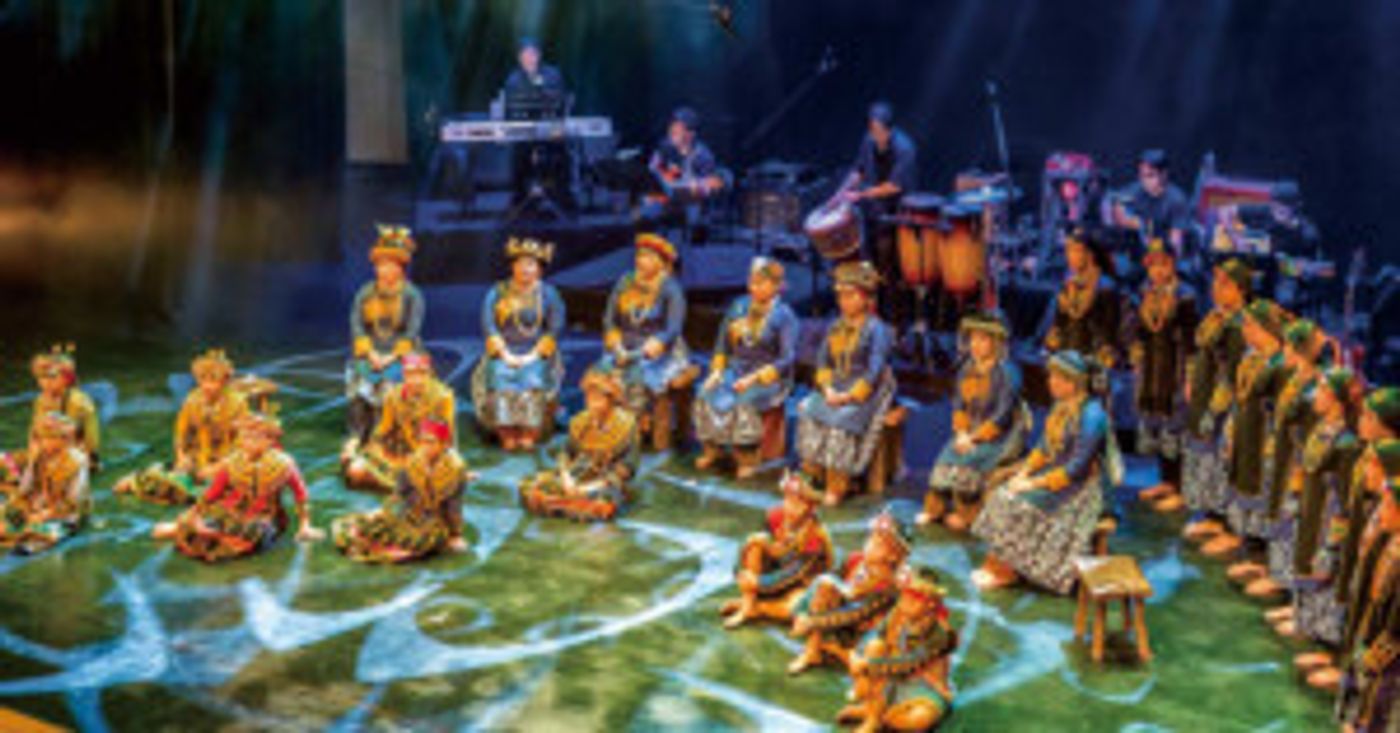Review: WOMADELAIDE 2019 - DAY 2 at Botanic Park
 Reviewed by Ray Smith, Saturday 9th March 2019.
Reviewed by Ray Smith, Saturday 9th March 2019.
On Day 2 of WOMADelaide 2019, Circus Abyssinia burst onto Stage 2 with an explosion of energy, music, dancing, and extraordinary circus skills. The collective "oohs" and "aahs" of the enormous crowd huddled around the small stage were so loud that they piqued the interest of every passing punter, as they made their way from the Global Village to Mr. V Music, or from the Village bar to another distant watering hole at the Coopers Garden Bar, across the enormous expanse that is the WOMADelaide site.
5 AngryMen had finished their first dark, physically aggressive performance for the day and their stunned audience had only to turn to the East to find more acrobatics on display. I'll write further on the 5AngryMen, but suffice to say that their crowd added to those already waiting at Stage 2, and then joined by passers-by, intrigued by the shocked delight made evident by the gasps and shrieks of the excited watchers, formed a crowd so large that your vertically challenged correspondent was obliged to move on to find something that he could actually see.
A stroll past the busy but silent Foundation Stage, which was being prepared to host its next performance, led me to Stage 3, where the Aboriginal ensemble Mambali were performing. This young energetic outfit from the Northern Territory was on fire as they sang "in language about country, culture and the Dhumbul (Devil) Dance". The striking figure of a traditional dancer, painted and costumed, leapt across the stage as the close harmonies of the singers wove their way around the pulse of yidaki or didgeridoo, that was often used as a percussion instrument rather than a drone. The very contemporary songs were more akin to rock ballads than the usual country and western influences commonly heard among Aboriginal bands. Their offering was both visually and acoustically exciting and engaging, and the band's stated intent of "striving to be a positive influence on the next generation" will definitely be realised.
My Baby took to the central Foundation Stage, the trio of two guitars and drums, dwarfed by the enormous structure. While they may appear to be a small outfit compared to the huge stage they were performing on, the sound they produced was incredibly big. While the female guitarist and singer played her electric guitar with one finger of her right hand as if it were a one string bass the other guitarist and the drummer flooded the park with sound. They presented an eclectic mixture of blues and funk with smatterings of soul, with driving rhythms and superb guitar work supporting the rich and soaring voice of the vocalist. They were as well received by the crowd as any of the larger, dance orientated ensembles and had their audience dancing from the first note to the last.
The Taiwu Ancient Ballads Troupe opened with a solitary flautist on Stage 2 playing what looked like a traditional twin pipe nose flute. The instrument I am told "is a very special instrument that is unique to Taiwanese aboriginal tribes. Nose flutes are quite popular among many indigenous tribes throughout the world, but the twin-pipe nose flute can only be found in Taiwan. Traditionally a man's instrument, this restriction has been ignored in recent years as tribe members look to preserve their musical culture."
The ageless, haunting sound floated softly through the air as singers joined the instrumentalist, their young voices buoyed by the flute's breath, and young voices they were, for this is a choir of children. Documenting and performing the traditional songs of the Paiwan Indigenous tribes has become a passion for music teacher Camake Valaule, and the resultant ensemble of 18 musicians and singers has re-discovered, and through doing so preserved 40 ancient songs of love, work and ceremony.
Fifteen singers finally assembled on the stage, arms linked in a curving line as they sang and circled in a slow shuffling dance, often with their backs to the audience which allowed us a clear view of the beautiful costumes that they were wearing.
The first piece performed by the entire ensemble was a lengthy one, performed in unison, with the only harmony offered being a lower octave from the adult men leading the group. The sheer power of this lilting, patient piece was punctuated by guttural exclamations and howls as the choir raised their arms together in a whooping cheer before continuing their slow shuffling circular movement again. Later in the performance, smaller ensembles sang in very close harmonies, often as close as major seconds, the edginess of which was reminiscent of Bulgarian traditional singers.
The overall effect was like a glimpse into the distant past of an ancient and complex culture, and the silent concentration and admiration of the large crowd was a testament to the power of traditional music being delivered with such power and integrity.
This was a superb example of WOMAD at its absolute finest. This is why we are here.
Reader Reviews

Videos

